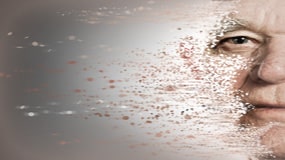Misdiagnosed or Improperly Treated Stroke? Help Is Available. Our Experienced New York Medical Malpractice Lawyers Will Review Your Case For Free.

The stroke malpractice lawyers at De Caro & Kaplen, LLP are nationally recognized for their skilled representation of brain injury and stroke victims in New York. For legal guidance, call us today.
What Are the Warning Signs of a Stroke?
A stroke occurs when the supply of oxygen to the brain is completely cut off or significantly reduced. An ischemic stroke is the result of an obstruction, such as a blood clot. When broken blood vessels cause blood to leak into the brain, it is known as a hemorrhagic stroke.
In some instances, strokes can occur from a blood vessel in the neck that is damaged from trauma, causing a clot to form that travels to the brain. This is known as a cervical artery dissection or vertebral artery dissection.
Signs of a stroke include:
- Sudden numbness or weakness of the face, arm, or leg (especially on one side of the body)
- Sudden confusion and/or trouble speaking or understanding
- Sudden vision impairment in one or both eyes
- Sudden difficulty walking, dizziness, or loss of balance or coordination
- Sudden onset of a severe headache with no apparent cause
How Doctors Fail Stroke Patients
It’s no secret that accurate diagnosis and speedy treatment are vital to reducing the long-term effects of a stroke. But sometimes, emergency departments are not properly staffed or trained. Physicians may be in a hurry, rushing from patient to patient, and may overlook or even ignore the warning signs of a stroke. Medical malpractice can occur if providers:
- Fail to take proper medical histories or conduct thorough physical examinations
- Fail to order proper diagnostic studies (like a CT scan or MRI) in order to pinpoint a blockage
- Classify the stroke as another medical condition entirely, which results in delayed and/or improper treatment
- Fail to administer blood-thinning or anti-coagulation medications to the patient
- Improperly perform surgery, leading to hypotension (abnormally low blood pressure) and a stroke
- Fail to administer tissue plasminogen activator (tPA), an FDA-approved clot-busting drug with the ability to stop the progression of a stroke if timely given after the onset of symptoms
When the signs and symptoms of a stroke or impending stroke are missed, ignored, or improperly responded to by doctors, urgent care facilities, and hospitals, the patient loses the chance for a good recovery.
Stroke Malpractice Settlements
You Deserve Justice. We Can Help.
Attorneys Shana De Caro and Michael Kaplen have devoted over 40 years safeguarding the legal rights of patients who have suffered injury due to medical malpractice. Upon taking your case, they will carefully review your hospital and medical records and radiological studies to uncover answers to these important questions:
- Was the stroke properly and timely diagnosed?
- Did the hospital or doctor perform the appropriate tests?
- Were the patient’s signs, symptoms, and history properly evaluated?
- Was the stroke properly prevented from taking place or spreading?
- Was proper and timely stroke medication administered?
- Was the patient deprived of the chance for a better outcome?
At De Caro & Kaplen, LLP, our goal is to obtain a recovery that includes all the losses you’ve suffered, including lost wages and earning potential, current and future medical and rehabilitation expenses, and even emotional distress.
Put Your Case in Qualified Legal Hands
If you experienced stroke complications following misdiagnosis or improper treatment, you and your family deserve to be compensated. Let our New York medical malpractice lawyers put their specialized skill set to work for you. You pay no legal fees unless we successfully conclude your case. Contact us today.